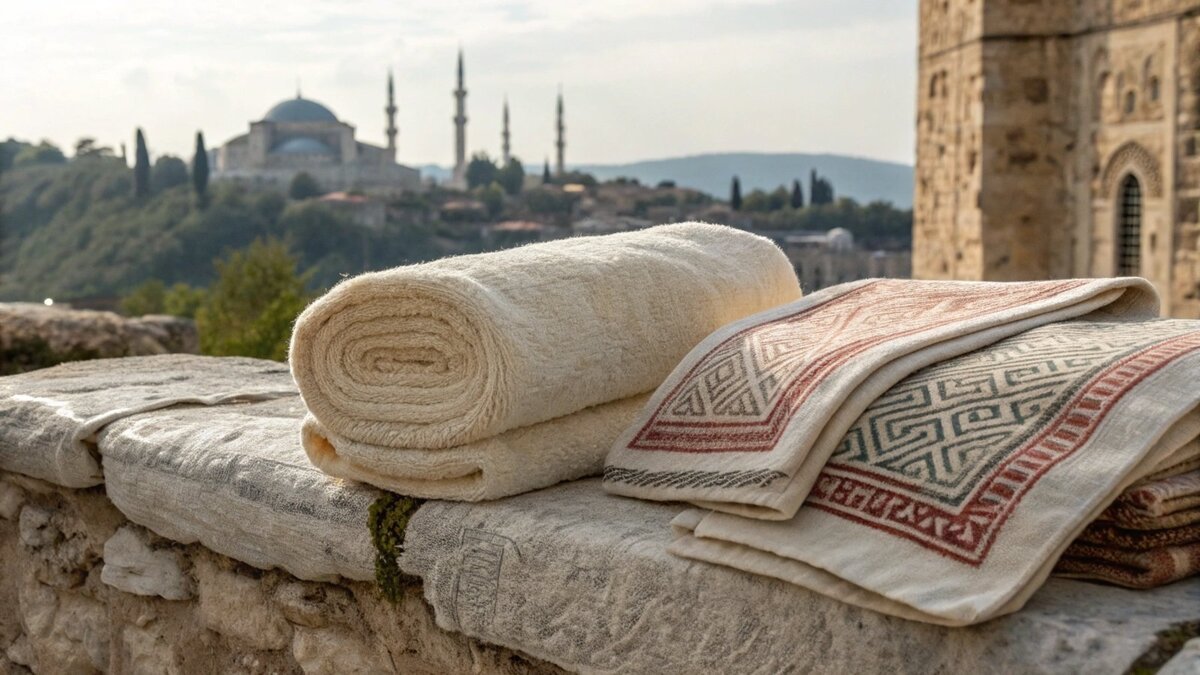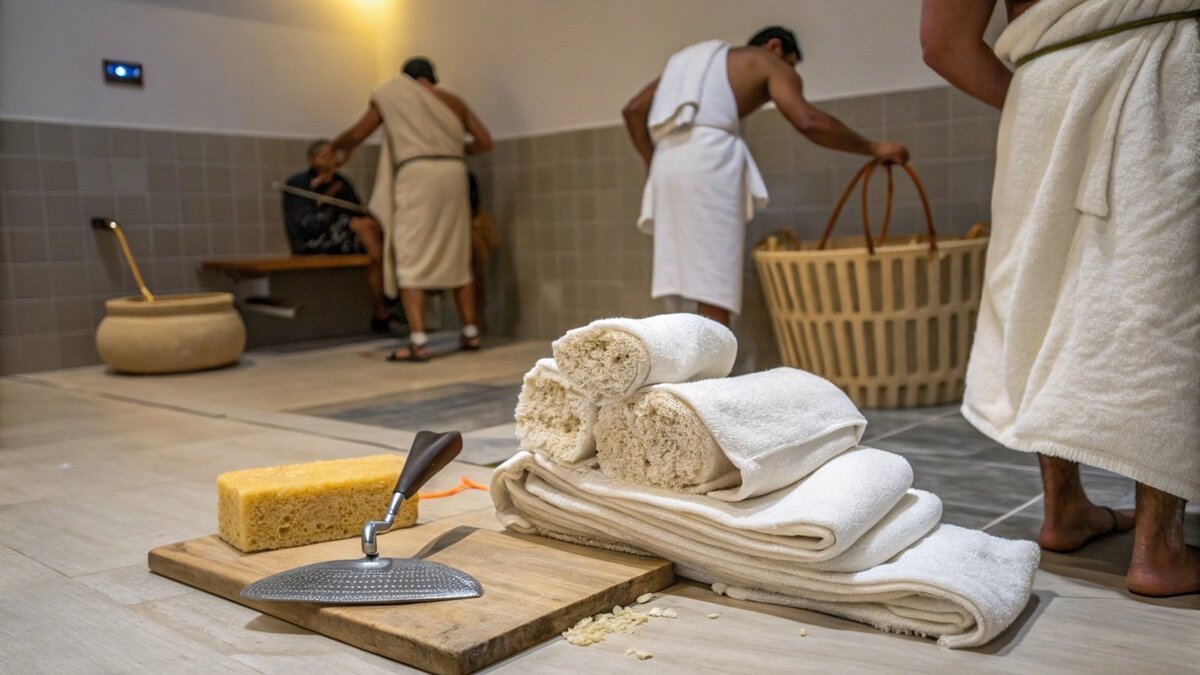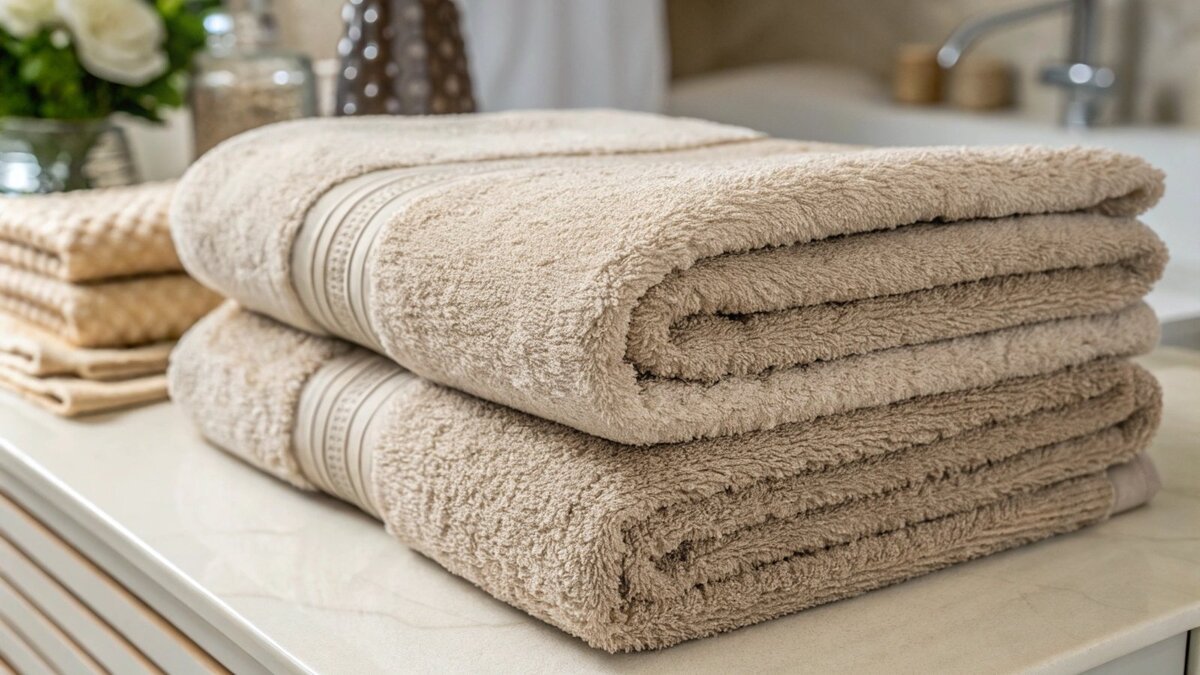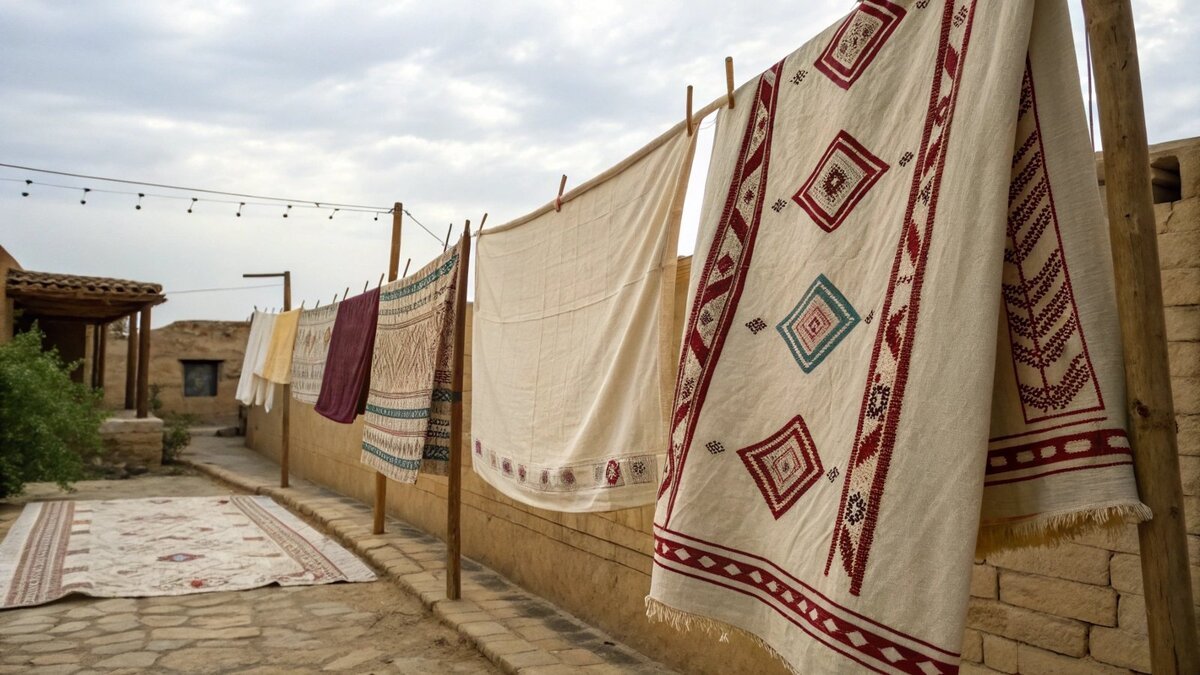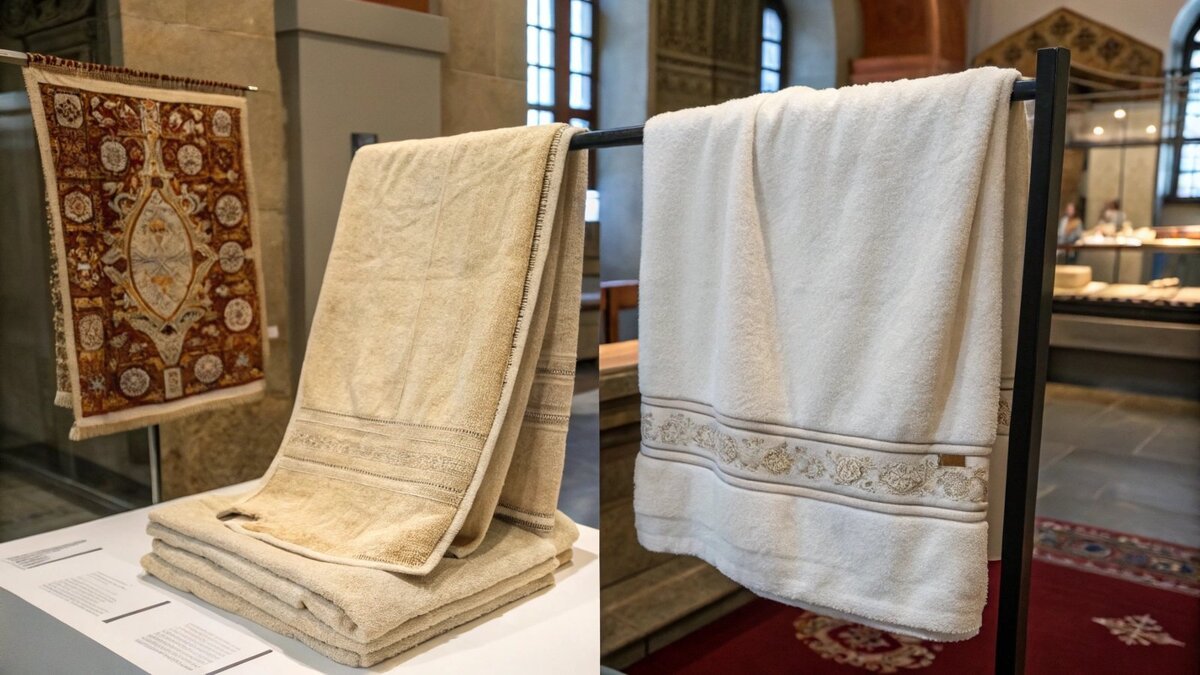Tired of seeing the same-old products? You know the simple towel holds potential, but its history seems too plain to inspire. Yet, its journey from a simple cloth to a modern essential is full of innovation.
The modern terry cloth towel we use today was invented in the Ottoman Empire, specifically in Bursa, Turkey, around the 17th century. However, the concept of using textiles to dry the body is much older, with ancient civilizations using various flat-woven fabrics for this purpose.
It’s easy to take the humble towel for granted. I see thousands of them rolling off our production lines at TowelTrend every single day, each one perfected for absorbency and softness. We discuss cotton grades, loop height, and colorfastness, focusing on the future of towel technology. But looking back at the towel’s history gives us a much deeper appreciation for the quality and choice we have now. It’s a story of cultural shifts, technological leaps, and the constant human desire for comfort. To truly understand the towel, we have to start at the beginning and ask what people did without it.
What Was Used Before the Modern Towel?
Imagine stepping out of a bath without a soft, absorbent towel waiting for you. That comfortable, everyday luxury simply didn’t exist for most of human history. So, how did people get dry? Ancient cultures had clever, though far less fluffy, solutions for drying themselves.
Before modern towels, people used what was available. Ancient Romans used linen cloths or curved metal scrapers called strigils. Other cultures relied on thin, flat-woven fabrics, sponges, or simply air-drying. The focus was purely on function, not the luxurious feel we expect today.
In all my years in the textile industry, I’ve learned that a fabric’s structure defines its function. Long before the invention of the looped pile that makes towels so thirsty, people worked with what they had. These were almost always flat-woven textiles.
Early Drying Methods
The Romans, famous for their elaborate public baths, had a multi-step process. They would first apply oil to their skin, then use a [strigil](https://en.wikipedia.org/wiki/Strigil)—a curved blade made of metal or bone—to scrape off the oil, sweat, and dirt. After scraping, they would use a linteum, a piece of linen cloth, to wipe away any remaining water and oil. It was effective but a far cry from wrapping up in a plush bath sheet. The Ancient Greeks used a similar method, often incorporating natural sea sponges into their bathing rituals to wash and help dry the skin.
Materials Used Before Terry Cloth
The material itself was key. Different civilizations had access to different resources, which dictated their drying tools.
| Material | Civilization(s) | Properties and Use |
|---|---|---|
| Linen | Romans, Egyptians | Made from flax, it’s absorbent but not soft and dries slowly. |
| Strigil | Greeks, Romans | A non-fabric tool used to scrape the body clean and semi-dry. |
| Natural Sponges | Greeks | Used to wash and pat the skin dry after bathing. |
| Air Drying | Various Cultures | The simplest and most universal method, especially in warm climates. |
The key takeaway is that the ancients worked with flat surfaces. The genius of the modern towel isn’t just the cotton; it’s the looped structure, a three-dimensional concept for drying that was centuries away.
When Did the Terry Towel Truly Emerge?
The idea of a purpose-built drying cloth is old, as we’ve seen. But that simple linen square is worlds away from the towels we produce today. The invention of the plush, super-absorbent terry towel was a specific historical moment that changed everything about drying off.
The terry cloth towel, with its signature looped pile, was developed in Bursa, a city in the Ottoman Empire (modern-day Turkey), around the 17th century. These early towels were called ‘havly,’ meaning ‘with loops,’ and were a key part of the Turkish bath ceremony.
The birth of the terry towel is a story of craft and culture. It wasn’t just a random invention; it was developed to enhance the experience of the hammam, or Turkish bath. This makes its origin story fascinating for anyone in the textile business.
The Birthplace: Bursa, Turkey
Bursa was a major center for silk and cotton weaving in the Ottoman Empire. Its skilled artisans were renowned for their craft. The hammam ritual was (and still is) an elaborate social event involving steam, washing, and relaxation. A simple flat-woven cloth just didn’t cut it for the level of absorbency and luxury required. Weavers in Bursa began experimenting and developed a unique weaving technique that created loops on the fabric’s surface. These towels, originally hand-loomed from cotton or linen, were called havly and later became known as peshtemal or hammam towels.
The Weaving Innovation
As a manufacturer, this is the part that I find most brilliant. Unlike a simple, flat-woven tea towel, a terry towel is woven on a special loom with two warp beams. One beam holds the "ground warp," which creates the stable base of the fabric. The second beam, the "pile warp," is kept loose. As the weft thread is beaten into place, this slack in the pile warp is pushed into tiny loops. These loops are what give a towel its incredible surface area, making it so soft and absorbent. Even today, as we develop new towel designs for brands at TowelTrend, the principles established in 17th-century Bursa are still the foundation of our work.
Did Ancient Civilizations Have Their Own Version of Towels?
When we talk about towels today, we picture fluffy cotton rectangles. But if you were living in ancient Rome or Egypt, you still needed to get dry after bathing or washing. Did they have anything that served the same purpose, even if it looked very different?
Yes, ancient people used textiles for drying, but they were not the looped terry towels we use. They primarily used flat-woven pieces of linen or wool. In some cultures, like ancient Rome, they also used a metal scraper called a strigil to remove oil and water.
The key here is to separate the object’s form from its function. The function of drying the body has existed for as long as people have been bathing. The dedicated, purpose-built form of a terry towel, however, is a much more recent development.
Function Over Form
Think of it like plates or shoes. Ancient people had objects that served these functions—flat stones for food, leather wrappings for feet—but they bear little resemblance to modern ceramic plates or athletic sneakers. The same is true for towels. The ancient ‘towel’ was defined by its job, not its specific material or weave. It was a utility item, woven from whatever fiber was most readily available in that region.
A Global Snapshot of Ancient Drying
Looking around the ancient world shows how different cultures solved the same problem:
- Egypt: Egypt was a flax-growing powerhouse. Linen textiles were abundant and used for everything from clothing to mummification. So, it was natural for Egyptians to use pieces of linen cloth for drying after bathing in the Nile.
- Rome: As mentioned, the Romans had their
linteum, a linen cloth used after the strigil had done the heavy work of scraping away oil and grime in the public baths. - Mesoamerica: Civilizations like the Maya and Aztecs were masters of cotton cultivation and weaving long before Europeans arrived. It is almost certain they used woven cotton cloths for personal hygiene, including drying.
Whenever a client asks me to help them decide between different towel types, I’m reminded of this history. We might discuss a flat-woven peshtemal versus a plush hotel-style towel. Both will dry you, but they come from different traditions and offer completely different user experiences. It’s the same fundamental choice people have been making, in one form or another, for millennia.
What Kind of Towels Existed in the 1600s?
The 1600s, or 17th century, was a period of incredible change around the world. But what about the humble towel? Was it still just a simple piece of linen, or had the modern revolution in softness and absorbency begun? This century was, in fact, the dawn of the modern towel.
Yes, towels existed in the 1600s. In Europe, most people still used flat-woven linen or hemp cloths. However, this was the century the game changed. In the Ottoman Empire, weavers in the city of Bursa were perfecting the looped-pile towel, the direct ancestor of our modern terry cloth.
The 17th century represents a fascinating split in the history of the towel. We see the old world and the new world of towels existing at the same time, separated by geography and technology. This era perfectly bridges the gap from ancient linen cloths to the industrial-scale manufacturing we see today.
A Tale of Two Towels
On one side of the world, you had the status quo.
- In Europe: For the vast majority of people, a "towel" was still a piece of flat-woven linen. It was functional, durable, and did the job. For wealthy households, owning a large collection of linens, including towels, was a sign of status, but the towels themselves were not considered luxury items in terms of their feel.
On the other side, innovation was happening.
- In the Ottoman Empire: The looped havly was being perfected in Bursa. These were not just functional items; they were intricate pieces of craftsmanship, often with decorative patterns woven into the fabric. They were central to the luxurious and social hammam experience.
Why Didn’t Terry Spread Faster?
If these superior towels existed, why didn’t everyone have one? The answer lies in production and trade. The double-loom weaving technique was a specialized skill localized to Turkey. Production was done by hand, making it slow, laborious, and expensive. As a result, Turkish towels that made their way to Europe were costly luxury imports, available only to the very rich. It wasn’t until the 19th century, when an English manufacturer named Henry Christy saw the looped towels in Turkey and figured out how to mass-produce them on machine looms during the Industrial Revolution, that terry cloth became accessible to all. Today, when a brand in North America orders 500 towels from my factory and gets them delivered to their door in weeks, it’s a modern miracle compared to the 17th century.
Conclusion
The modern terry towel was born in 17th-century Turkey, but the need for drying cloths is ancient. From Roman scrapers to today’s plush cotton, the towel’s evolution reflects our journey in textile innovation.

